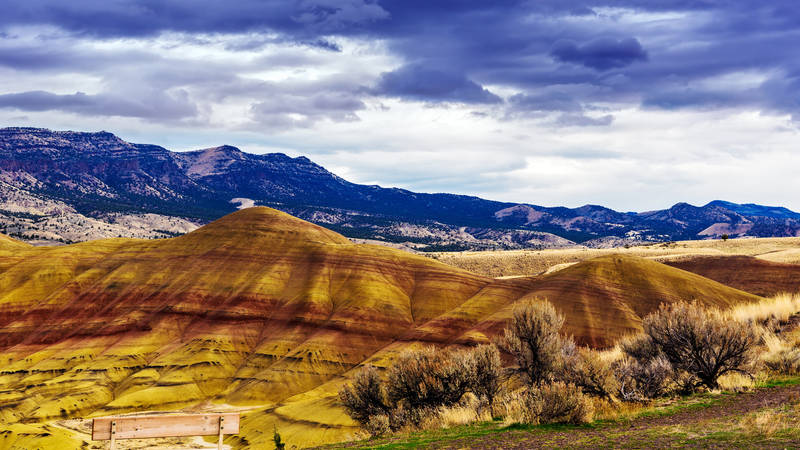Cattle grazing is not compatible with responsible public land management practices in most cases. Yet new legislation could double the length of time commercial ranchers can graze their animals.
Many people would be surprised to hear it: There are commercial beef cattle in national parks? Most definitely: More than a dozen of America’s national parks carry “grandfather clauses” that allow privately owned beef cattle to eat and trample national park resources while their owners pay just a token fee to lease these grazing privileges from the National Park Service.
What’s worse, legislation passed last month in the U.S. House of Representatives includes language from a bill known as the “Grazing Improvement Act of 2012.” This legislation would double the length of time commercial beef cattle ranchers can graze their animals inside national parks and other public lands, from ten to 20 years.* This sweetheart deal has high costs for the parks’ wildlife, vegetation, and cultural heritage—and for the National Park Service’s annual budget. The impacts of grazing inside national parks include degradation of wildlife habitat, pollution of streams and rivers with cattle urine and feces, the spread of invasive plant species, and trampling of Native American archaeological sites. Park Service officials are denied permission to reintroduce native predators, such as wolves and cougars, to protect the economic interests of surrounding ranching communities, while beef cattle that were never part of the natural landscape freely browse parks.
As one national park superintendent told us, “There are commercial beef cattle in the park right now eating endangered plants that, if you dug one up, I’d arrest you for it.”
A 2005 Government Accountability Office (GAO) study (PDF) revealed that the National Park Service spends $410,000 per year to accommodate commercial beef cattle production inside our national parks, especially in the arid western states. The minimal fees the Park Service is allowed to charge not only fall short of fees ranchers pay to lease neighboring private lands, but also fail to cover the parks’ expenses in restoring trampled stream beds, controlling non-native species, and repairing park fences felled by wandering bovines. In Capitol Reef National Park in southern Utah, for example, ranchers pay $1.35 per month for a cow and calf to graze on national park lands. By contrast, a human camper pays $300 per month to camp in the park, and few of them feast on the park’s vegetation.
Some non-profits have bought out commercial grazing leases but then discovered that they were still required by law to continue grazing cattle on those public lands. We need federal legislation that would allow NGOs to purchase grazing allotments, remove the cattle, and restore the park landscapes . Ranchers’ long history of keeping cattle throughout the West—a traditional and even romanticized practice in many places—is not compatible with protected public land. These parks belong to all Americans and must be preserved for generations to come.
Alternately, Park Service Director Jonathan Jarvis could sign Directors Order 77-3, a written agency rule that would allow superintendents to remove livestock from national park land if the animals are damaging park resources. In national parks that have ended their commercial beef cattle operations, native vegetation and wildlife populations have quickly blossomed back to their previous, healthy conditions.
Meanwhile, the Senate must reject the so-called “Grazing Improvement Act.” Extending beef cattle leases on public lands from one decade to two would not only fail to solve the problems created by beef cattle grazing in our national parks—it would make the situation twice as bad.
National Park Units with Commercial Beef Cattle Grazing
Black Canyon of the Gunnison National Park (CO) Buffalo National River (AR) Capitol Reef National Park (UT) City of Rocks National Reserve (ID) Coronado National Memorial (AZ) Death Valley National Park (CA) Dinosaur National Monument (CO) Glen Canyon National Recreation Area (UT) Grand Teton National Park (WY) Lake Mead National Recreation Area (NV) Lake Roosevelt National Recreation Area (WA) Mojave National Preserve (CA) Point Reyes National Seashore (CA)
*An earlier version of this post reported that this bill was pending in the House of Representatives. It was in fact amended to H.R. 2578, the Conservation and Economic Growth Act, and passed in June, though the legislation has yet to be introduced in the Senate. We regret the error.
About the author
-
 James D. Nations Former Director of NPCA's Center for Park Research
James D. Nations Former Director of NPCA's Center for Park ResearchTrained as an ecological anthropologist, Dr. James D. Nations has spent the past 25 years working for the protection of natural ecosystems and cultural heritage in the tropics and the United States. Before joining the National Parks Conservation Association as head of the Center for Park Research, James worked 13 years with Conservation International, serving as Vice President for Mexico and Central America, Vice President for Latin America, and Vice President for Development Agency Relations.
-
General
-
- Parks:
- African Burial Ground National Monument
- Black Canyon Of The Gunnison National Park
- Buffalo National River
- Capitol Reef National Park
- City Of Rocks National Reserve
- Coronado National Memorial
- Death Valley National Park
- Dinosaur National Monument
- Glen Canyon National Recreation Area
- Grand Teton National Park
- Lake Mead National Recreation Area
- Lake Roosevelt National Recreation Area
- Mojave National Preserve
- Point Reyes National Seashore
-
-
Issues


